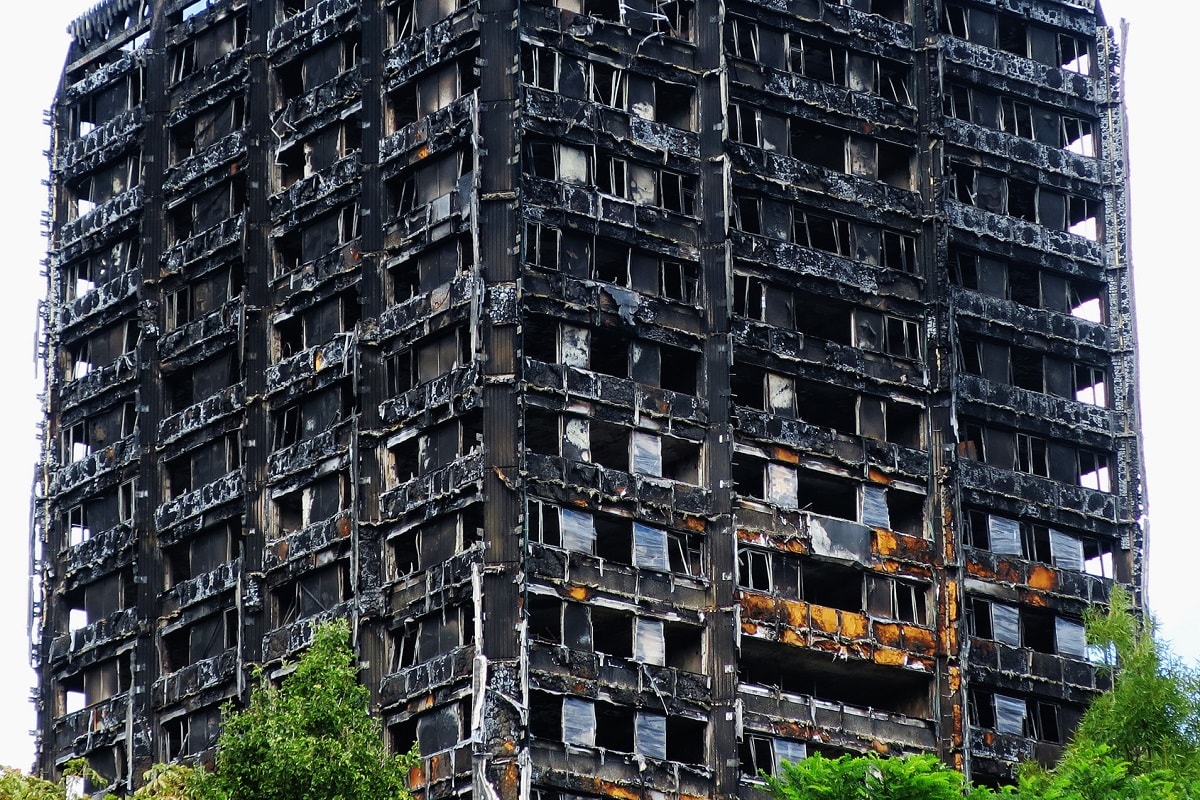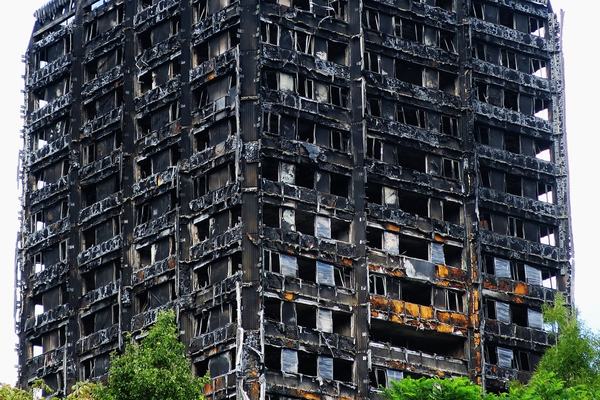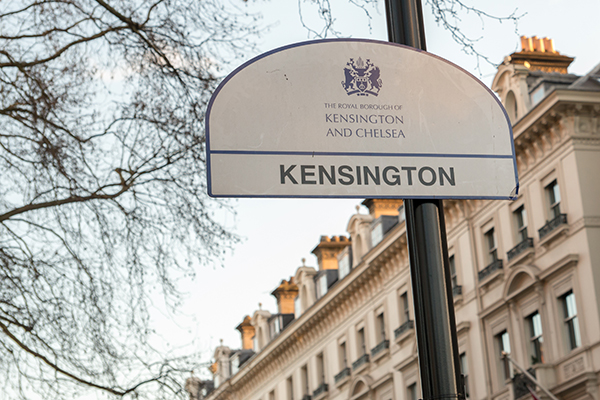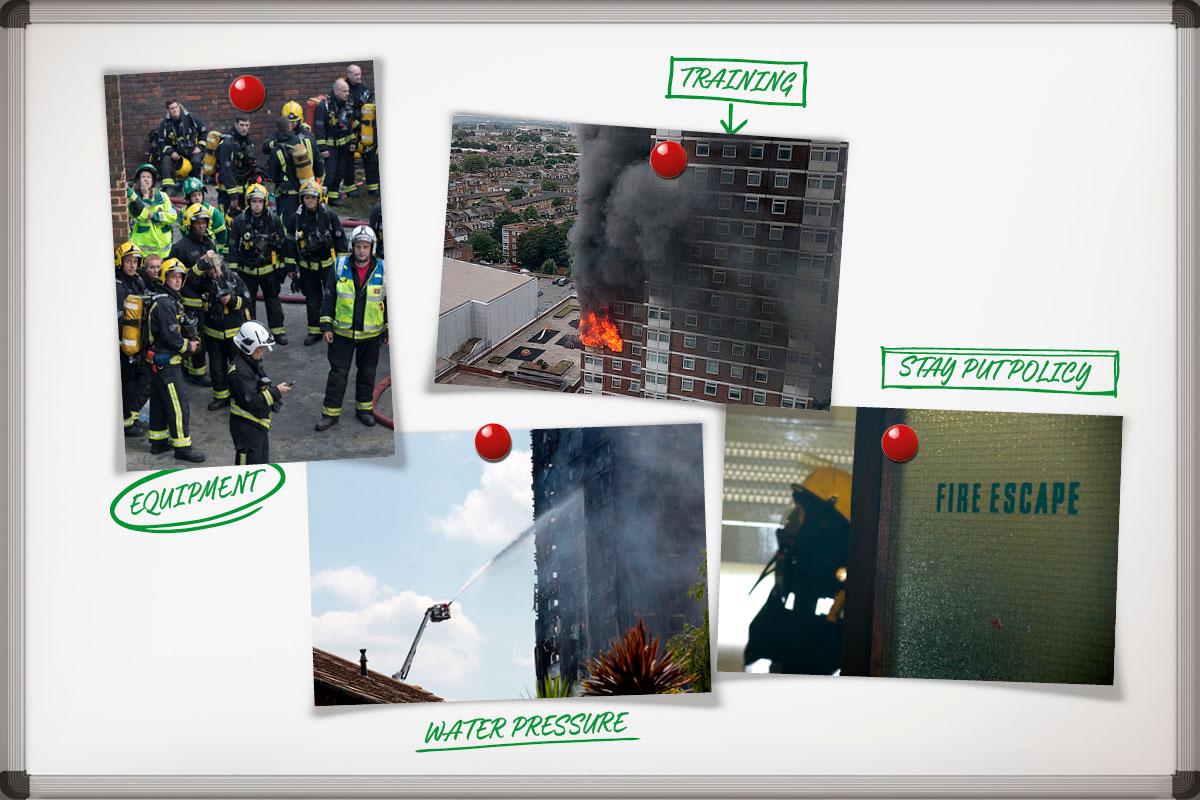You are viewing 1 of your 1 free articles
Grenfell Inquiry day 44: firefighter recalls radio signal failures
A senior firefighter who organised search and rescue missions in Grenfell Tower has told the public inquiry how communication equipment proved ineffective on the night of the blaze.
Key points:
- Radio signals between search and rescue firefighters and lower floors failed
- Fire sector commander “unaware” of plan for firefighting without compartmentation
- Smoke-clearing device took four and a half hours to arrive
Richard Welch, borough commander for Lambeth at the London Fire Brigade, gave evidence to the Grenfell Tower Inquiry today.
For most of the fire he was ‘fire sector commander’ – meaning he was in charge of planning the response to the blaze in parts of the building affected.
Usually this would only be a couple of floors, but at Grenfell his remit covered the whole building.
When he first arrived, Mr Welch also declared the fire a major incident at around 2:05am while briefly incident commander.
His written evidence to the inquiry described how while driving to the tower, he could see the glow from the fire and hear “more and more” fire survival guidance calls coming in which made him “feel horrible”.
Upon arriving at the fire, he heard a “large amount of screaming coming from the upper floors from people in need of rescuing” echoing down the stairwell.
He compared the event to “Armageddon”.
Mr Welch said he decided to move the bridgehead up from the second floor to the third to give firefighters with breathing apparatus more time to retrieve casualties, but that “sadly was proving very difficult to progress to upper floors due to the intensity of the fire”.
He eventually moved the bridgehead back to the tower’s ground floor after hearing reports of fire in floors below the third storey.
Over around 10 hours, Mr Welch directed fire crews to work up floor by floor trying to rescue people trapped in the tower.
“I remember seriously thinking that we might lose firefighters. It was a desperate time and I really thought that I myself might not survive the fire,” he said in his written evidence.
In a statement given soon after the fire, Mr Welch recalled the rescue crews being “hampered throughout by poor communications signal” with the bridgehead – and said the signal began to fail within just two or three floors.
The lack of communications meant he was unable to tell crews higher up the tower about the decision to move the bridgehead down and rendered firefighters automatic distress units “ineffective”.
Mr Welch also said he was “unaware of any such pre-prepared plan for firefighting / search and rescue when compartmentation failed”.
And he described how early on in the fire he had called for a Positive Pressure Unit (PPV) – a large fan device – clear some smoke from the stairwell in order to help the rescue effort.
However, the PPV took around four and a half hours to arrive, he said, by which time smoke had already engulfed the stairwells.
Mr Welch also claimed that his crews told him fire doors in the building had their self-closers removed or were not working, helping the blaze to spread.
He added that bodies and hoses on the stairs blocked firefighters with breathing apparatus’ progress through the tower and that a lack of floor numbers in lobbies and stairwells “hindered” them.
The hearing continues.
The Grenfell Tower Inquiry
Closing statements
Day 85: victims' lawyers attack the fire brigade
Further expert evidence
Including some additional evidence from emergency call handlers, bereaved and relatives
Day 84: further evidence from survivors and relatives
Day 83: swift evacuation of tower possible if residents alerted
Day 82: initial fire was extinguished but then returned to the flat
Day 81: overheating fridge-freezer most likely cause of fire
Day 80: fire doors installed did not match product tested
Day 79: resident advised to stay put despite fire in flat
Day 78: insulation and cladding material below required standard
Day 77: molten plastic spread blaze down tower
Day 76: 'stay put' should be dropped when fire spreads across floors
Other witness evidence
Police, ambulance, gas suppliers, council, TMO and call room operators give evidence
Day 75: call room operators give evidence
Day 74: further evidence from TMO officers
Day 73: TMO boss failed to pass information to firefighters
Day 72: fire finally extinguished when gas switched off
Day 71: further questions over stay put advice
Day 70: the police evidence
The bereaved, survivors and relatives’ evidence
Day 69: video shows smoke billowing through fire door
Day 68: KCTMO removed self closing mechanism and never replaced it
Day 67: gaps in cladding fixed with duct tape
Day 66: 'don't fix broken system with a sticking plaster'
Day 65: survivor dragged disabled man down nine floors to safety
Day 64: KCTMO 'did not replace broken fire door'
Day 63: foam insulation inside cladding 'exposed' says survivor
Day 62: father gives harrowing account of son's death
Day 61: council’s management organisation slammed for faulty electrics
Day 60: stay put advice ‘led to deaths’, residents say
Day 59: residents describe problems with new windows
Day 58: survivor describes how daughter saved his life
Day 57: firefighter evidence ‘a slap in the face’, says survivor
Day 56: relations with contractor were ‘toxic’
Day 55: resident 'never happy' with stay-put advice
Day 54: tenant gives evidence about housing association
Day 53: stay put advice 'felt like trap'
Day 52: resident saved by son's phone call
The firefighters’ evidence
Day 51: firefighter feared encouraging residents to jump
Day 50: the LFB commissioner
Day 49: fire chief reveals frustration over lack of building plans
Day 48: internal fire spread 'bigger story' than cladding
Day 47: fire officer considered evacuating crews over building collapse fears
Day 46: 'we were improvising' senior firefighter admits
Day 45: firefighter urged for abandonment of 'stay put' policy
Day 44: firefighter recalls radio signal difficulties
Day 43: call hander 'uncomfortable' with insisting residents stay put
Day 42: residents only told to leave if they called fire brigade back
Day 41: breathing equipment delay 'hampered rescues on upper floors'
Day 40: chiefs told firefighters to abandon policy
Day 39: firefighters reveal dramatic rescue of children
Day 38: firefighters issue aplogies to families
Day 37: council 'unable to provide tower plans'
Day 36: QC defends inquiry process
Day 35: Javid would welcome interim recommendations
Day 34: water from hose 'too weak' to reach the flames
Day 33: 'oh my god, we've been telling people to stay put'
Day 32: further fire fighter describes lack of equipment and low water pressure
Day 31: 'incredibly difficult' task of recording information outlined
Day 30: struggle to maintain control over rescue operation described
Day 29: fire service 'overwhelmed' by survival guidance calls
Day 28: 'the building beat us'
Day 27: firefighters 'forced to abandon plans to reach roof'
Day 26: poor signage hindered rescue efforts
Day 25: water pressure left firefighting equipment 'like garden hose'
Day 24: decision to abandon 'stay put' explored
Day 23: TV images 'could have assissted' rescue effort
Day 22: description of hectic scenes in the control centre
Day 21: account from the fire service 'nerve centre'
Day 20: firefighter describes 'huge volume' of calls from trapped residents
Day 19: firefighter 'given no training on cladding fires'
Day 18: evacuation would have been 'huge catastrophe'
Day 17: firefighters describe access and lift issues
Day 16: scenes of carnage likened to 9/11
Day 15: firefighters recount trauma of survival guidance calls
Day 14: firefighters describe spread of blaze
Day 13: firefighters recall radio difficulties
Day 12: "it was like a war zone"
Day 11: questions raised over fire fighters' radios
Day 10: watch manager emotional under questioning
Day nine: lead firefighter 'not trained in stay put policy'
The expert reports: authors give evidence to inquiry
Day eight: where the fire started
Day seven: what was in the cladding?
Day six: the cause and spread of the fire
Day five: expert highlights key issues
Day four: firefighters defend response to fire
Day three: council and contractors appear for the first time
Day two: lawyers for the survivors make their case
Day one: expert evidence released on cladding and stay put
The commemoration hearings
30 May: Grenfell Council 'recognised it should not house disabled victim above four storeys'
29 May: Anger on day six of the Grenfell Inquiry
25 May: Grenfell families 'forced to live in chimney with stay put policy'
24 May: Grenfell family complained about father being housed on 17th floor
23 May: Tributes to children on third day of Grenfell hearings
22 May: Emotions run high as Grenfell bereaved shown footage of the tower burning
21 May: Grenfell victims share tributes as inquiry opens













